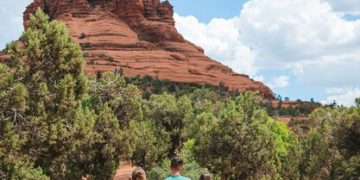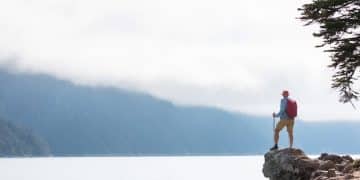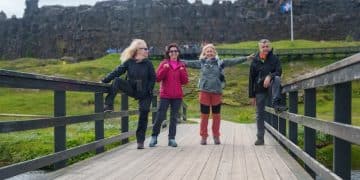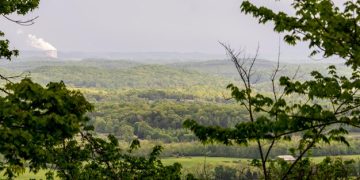National Park Camping: Secure Your Spot 6 Months Ahead
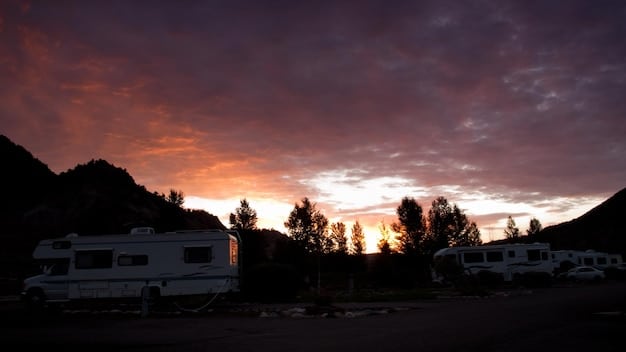
Securing a campsite in a popular national park often requires booking six months in advance; by understanding the reservation system, prioritizing popular parks, and utilizing insider tips, you can increase your chances of enjoying a memorable outdoor experience.
Dreaming of camping under the stars in one of America’s breathtaking national parks? The key to turning that dream into reality, especially in sought-after locations, is understanding the reservation system and planning well in advance. Here’s how to master national park camping reservations: insider tips to secure a spot 6 months in advance.
Understanding the National Park Camping Reservation System
Navigating the national park camping reservations: insider tips to secure a spot 6 months in advance starts with knowing the rules. Most national parks utilize online reservation systems, primarily through Recreation.gov. Understanding how these systems function, common release dates, and any specific park requirements is essential for success.
Recreation.gov: Your Gateway to the Great Outdoors
Recreation.gov is the official platform for booking campsites in many national parks. Creating an account and familiarizing yourself with the website’s layout, search functions, and alert systems are the first steps.
Release Dates: The Six-Month Window
Many parks release campsites six months in advance, but this can vary. Knowing the exact release date and time for your desired park is crucial. Setting a reminder and preparing to book precisely when the window opens will significantly increase your chances.
- 📅 Check the Specific Park’s Website: Confirm the reservation window for your chosen park.
- ⏰ Set an Alarm: Be ready to book the moment the reservation window opens.
- 💻 Use Multiple Devices: Having a backup device can be helpful in case of technical issues.
Successful national park camping reservations: insider tips to secure a spot 6 months in advance rely on understanding the system and being prepared.
Prioritizing Popular National Parks
Certain national parks are incredibly popular and require meticulous planning to secure a campsite. Parks like Yosemite, Yellowstone, and Zion draw massive crowds, and reservations fill up within minutes. Knowing how to prioritize these parks and employ various techniques is key.
Yosemite National Park: A Camping Hotspot
Yosemite’s iconic landscapes make it a highly sought-after camping destination. Campsites here, especially in Yosemite Valley, are notoriously difficult to book. Knowing the specific release times (usually five months in advance on the 15th of each month) and having a flexible plan is vital.
Yellowstone National Park: Bison and Beyond
Yellowstone is another popular choice, with numerous campgrounds offering different experiences. Booking campsites near popular attractions like Old Faithful or the Grand Canyon of the Yellowstone requires advanced planning and immediate action when the booking window opens.
Zion National Park: The Narrows and Angels Landing
Zion’s stunning slot canyons and hiking trails make it a year-round destination. Campsites in Zion Canyon are highly competitive. Consider booking during the off-season or exploring campgrounds outside the park that still offer access to Zion’s wonders.
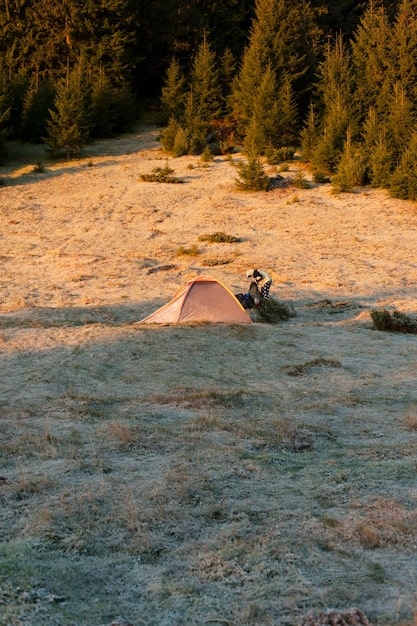
Understanding the popularity and specific reservation quirks of these parks allows you to refine your strategy for successful national park camping reservations: insider tips to secure a spot 6 months in advance.
Insider Tips and Tricks for Booking
While understanding the system is crucial, mastering insider tips can give you an edge in securing a campsite. From identifying less popular campgrounds to being flexible with dates and using booking tools, these strategies can make a significant difference.
Consider Off-Season Camping
Camping in the off-season (spring, fall, or even winter in some parks) often means fewer crowds and easier access to campsites. While the weather may be less predictable, the solitude and unique experiences can be incredibly rewarding. Check weather conditions and pack accordingly.
Be Flexible with Dates
If your dates are flexible, you’ll have a higher chance of finding available campsites. Instead of focusing on a specific weekend, broaden your search to include weekdays or less traditional camping dates. Even shifting your trip by a few days can open up possibilities.
Leverage Booking Tools and Alerts
Several third-party tools and websites offer alerts and notifications for campsite availability. These resources can monitor Recreation.gov and notify you when a campsite becomes available due to cancellations or changes. Set up alerts for your desired parks and dates.
- 🔔 Set Up Alerts: Use websites and apps that monitor campsite availability and send notifications.
- 🗓️ Be Flexible: Consider weekdays or off-season dates for better chances.
- 🏕️ Explore Alternatives: Look into less popular campgrounds within or near the park.
By incorporating these tips, you’ll greatly improve your chances of successful national park camping reservations: insider tips to secure a spot 6 months in advance.
Exploring Less Popular Campgrounds
While iconic campgrounds draw the most attention, less popular campgrounds can offer equally rewarding experiences with better availability. These hidden gems often provide a quieter, more secluded camping experience and are worth considering when planning your trip.
Hidden Gems in National Parks
Many national parks feature lesser-known campgrounds that offer similar amenities and access to attractions, without the crowds. Researching these alternatives can lead to fantastic discoveries. For example, in Yosemite, consider Hodgdon Meadow or Crane Flat instead of the Valley campgrounds.
Campgrounds Outside the Park
Don’t limit your search to campgrounds within the park boundaries. Many private and public campgrounds outside the park offer convenient access and may have better availability. These campgrounds can provide a comfortable base for exploring the park.
Utilizing Maps and Resources
Using maps and online resources to identify these lesser-known campgrounds is essential. Websites like Campendium or Freecampsites.net can help you find options both within and outside the park. Check reviews and amenities to ensure they meet your needs.
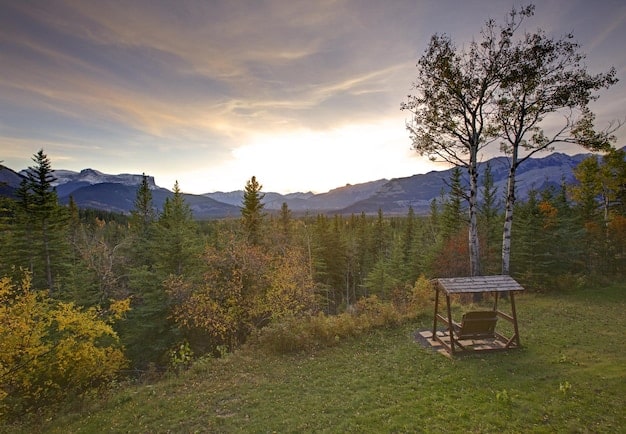
Discovering and utilizing these alternatives enhances your national park camping reservations: insider tips to secure a spot 6 months in advance, ensuring you have a fantastic camping experience.
Dealing with Sold-Out Campgrounds
Even with meticulous planning, you may encounter situations where your desired campgrounds are fully booked. Understanding alternative strategies, such as using cancellation policies or resorting to walk-up campsites, can still salvage your camping trip.
Understanding Cancellation Policies
Familiarize yourself with the cancellation policies of Recreation.gov and the specific park. Campsites often become available due to cancellations, so monitoring the reservation system regularly can yield results. Some parks offer refunds or credits for cancellations made within a certain timeframe.
Monitoring for Cancellations
Continuously check Recreation.gov for cancellations. Using tools or manually checking the website multiple times a day can help you snag a campsite that becomes available. Be ready to book immediately when you see an opening.
Walk-Up Campsites and First-Come, First-Served
Some national parks offer a portion of their campsites on a walk-up or first-come, first-served basis. Arriving early in the morning and being prepared to wait can secure you a campsite, especially on weekdays. Check the park’s website for specific procedures.
Staying Flexible and Adaptable
Securing national park camping reservations: insider tips to secure a spot 6 months in advance often involves flexibility and adaptability. Being open to alternative parks, different types of camping, and unexpected changes can lead to memorable experiences, even when your initial plans fall through.
Consider Alternative National Parks
If your desired park is fully booked, explore other national parks in the region or across the country. Each park offers unique landscapes and experiences. Consider parks like Acadia, Olympic, or Great Smoky Mountains as alternatives, depending on your interests.
Explore Different Types of Camping
Consider alternatives like dispersed camping (also known as boondocking), which is free camping on public lands, or camping in national forests adjacent to the park. These options can provide a more secluded and adventurous experience.
Embrace Change and Unexpected Adventures
Sometimes, the best adventures come from unexpected changes. If your initial plans don’t work out, embrace the opportunity to explore new parks, try different activities, and create unique memories. Being adaptable can lead to incredible discoveries.
| Key Point | Brief Description |
|---|---|
| 📅 Booking Window | Reservations often open six months in advance; know the exact date. |
| 🏕️ Off-Season Camping | Consider camping during spring, fall, or winter for better availability. |
| 🔔 Cancellation Monitoring | Regularly check for cancellations on Recreation.gov. |
| 🏞️ Alternative Parks | If your first choice is booked, explore other national parks. |
Camping Reservations: Insider Tips to Secure a Spot 6 Months in Advance”]
▼
Most national parks allow campsite bookings six months in advance. It’s essential to check the specific park’s website on Recreation.gov for their exact release dates and times to optimize your chances.
▼
Keep checking Recreation.gov for cancellations, as spots often open up. Also, consider exploring less popular campgrounds within the park or nearby national forests for alternative options.
▼
Yes, off-season camping can be a great experience with fewer crowds and more campsite availability. However, be sure to check weather conditions and be prepared for potentially harsher environments.
▼
Essentials include a tent, sleeping bag, cooking equipment, food, water, appropriate clothing, a first-aid kit, navigation tools (map and compass), and insect repellent. Always check the park’s specific recommendations.
▼
Yes, you can explore dispersed camping (boondocking) in national forests, which is free but requires more self-sufficiency. Also, look into private campgrounds or RV parks near the national park for more amenities.
Conclusion
Mastering national park camping reservations: insider tips to secure a spot 6 months in advance requires a combination of strategic planning, insider knowledge, and adaptability. By understanding the reservation system, prioritizing popular parks, exploring alternatives, and staying flexible, you can significantly increase your chances of experiencing the beauty and tranquility of America’s national parks.
